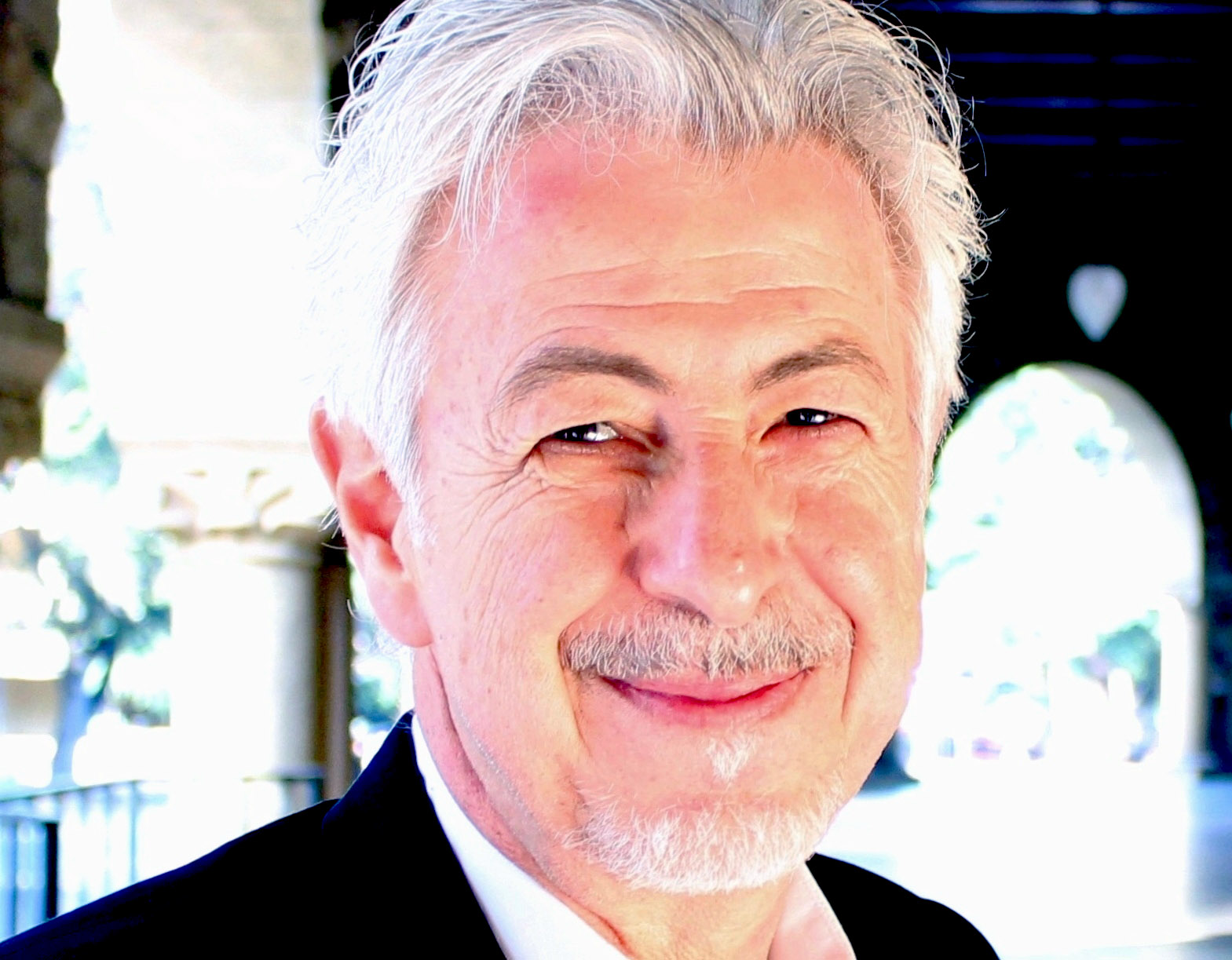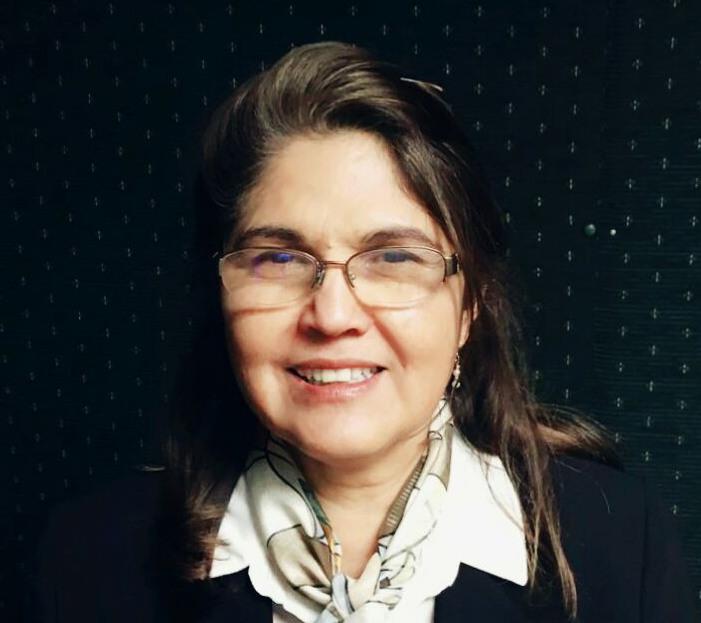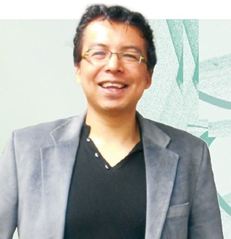Speakers
Article Index
 Confirmed Speakers
Confirmed Speakers
 |
Carlos M. Fonseca | University of Coimbra | Portugal |
 |
Oussama Khatib |
Stanford University | USA |
 |
Jose Martinez-Carranza | Instituto Nacional de Astrofísica, Óptica y Eletrónica (INAOE) | Mexico |
 |
Héctor Joaquín Fraire-Huacuja | Instituto Tecnológico de Ciudad Madero | Mexico |
 |
Laura Cruz Reyes | TecNM | Mexico |
 |
Jonatan Peña Ramírez | CICESE | Mexico |
| An Integrated View of Selection in Evolutionary Algorithms | |
 |
Carlos M. Fonseca University of Coimbra Talk Abstract: Selection plays a double role in evolutionary algorithms. The selection of solutions from the current solution set (or population) to produce new candidate (offspring) solutions through variation is known as parental selection, whereas the selection of solutions to discard in order to make room for new solutions in the population is usually called environmental selection. Intimately related to selection is the concept of solution fitness, which is typically related to the objective function(s) of the problem at hand. In practice, both types of selection must be implemented, although different evolutionary algorithms often emphasize either one or the other. In particular, it is common for only one type of selection to depend on fitness. Selection also has the double purpose of steering the search towards more promising regions of the search space by favouring the best solutions available (exploitation) while maintaining a sufficient level of diversity in order to be able to escape local optima and/or find multiple good solutions (exploration). Over the years, many different approaches to selection in evolutionary algorithms have been proposed in the literature, with the balance between exploration and exploitation gaining heightened importance in the context of multiobjective optimization. However, parental and environmental selection have continued to be seen as different operators, and to be implemented separately. In this talk, selection methods and fitness assignment strategies are reviewed and discussed from the unifying perspective of portfolio optimization, where the fitness of a solution is interpreted as an investment in that solution, and solution diversity emerges naturally from the need to balance return and risk in the portfolio. In addition, parental and environmental selection can be seamlessly integrated in the portfolio optimization formulation. Application examples illustrate the main aspects of the approach. Bio: Carlos M. Fonseca is an Associate Professor at the Department of Informatics Engineering of the University of Coimbra, Portugal, and a member of the Evolutionary and Complex Systems (ECOS) group of the Centre for Informatics and Systems of the University of Coimbra (CISUC). He graduated in Electronic and Telecommunications Engineering from the University of Aveiro, Portugal, in 1991, and obtained a Ph.D. in Automatic Control and Systems Engineering from the University of Sheffield, U.K., in 1996. His research has been devoted mainly to evolutionary computation and multi-objective optimization, with a focus on computationally efficient approaches to preference articulation and experimental performance evaluation in evolutionary multi-objective optimization. He is the Scientific Representative of the Grant Holder of COST Action CA15140 – Improving Applicability of Nature-Inspired Optimisation by Joining Theory and Practice (ImAppNIO), and the leader of a Working Group on Software in that Action. He has served as General, Technical or Track co-Chair of several major international conferences on evolutionary computation, and is a member of the Evolutionary Multi-Criterion Optimization and of the Parallel Problem Solving from Nature Steering Committees. More information about his research contribution can be found from https://eden.dei.uc.pt/~cmfonsec/#bio. |
| OCEAN ONE: A ROBOTIC AVATAR FOR OCEANIC DISCOVERY | |
 |
Oussama Khatib Stanford University Talk Abstract: The promise of oceanic discovery has intrigued scientists and explorers for centuries, whether to study underwater ecology and climate change, or to uncover natural resources and historic secrets buried deep at archaeological sites. The quest to explore the ocean requires skilled human access. Reaching these depth is imperative since factors such as pollution and deep-sea trawling increasingly threaten ecology and archaeological sites. These needs demand a system deploying human-level expertise at the depths, and yet remotely operated vehicles (ROVs) are inadequate for the task. A robotic avatar could go where humans cannot, while embodying human intelligence and intentions through immersive interfaces. To meet the challenge of dexterous operation at oceanic depths, in collaboration with KAUST's Red Sea Research Center and MEKA Robotics, we developed Ocean One, a bimanual force-controlled humanoid robot that brings immediate and intuitive haptic interaction to oceanic environments. Teaming with the French Ministry of Culture’s Underwater Archaeology Research Department, we deployed Ocean One in an expedition in the Mediterranean to Louis XIV’s flagship Lune, lying off the coast of Toulon at ninety-one meters. In the spring of 2016, Ocean One became the first robotic avatar to embody a human’s presence at the seabed. This expedition demonstrated synergistic collaboration between a robot and a human operating over challenging manipulation tasks in an inhospitable environment. Tasks such as coralreef monitoring, underwater pipeline maintenance, and offshore and marine operations will greatly benefit from such robot capabilities. Ocean One’s journey in the Mediterranean marks a new level of marine exploration: Much as past technological innovations have impacted society, Ocean One’s ability to distance humans physically from dangerous and unreachable work spaces while connecting their skills, intuition, and experience to the task promises to fundamentally alter remote work. We foresee that robotic avatars will search for and acquire materials in hazardous and inhospitable settings, support equipment at remote sites, build infrastructure for monitoring the environment, and perform disaster prevention and recovery operations— be it deep in oceans and mines, at mountain tops, or in space Bio: Oussama Khatib received his Doctorate degree in Electrical Engineering from Sup’Aero, Toulouse, France, in 1980. He is Professor of Computer Science at Stanford University. His work on advanced robotics focuses on methodologies and technologies in human-centered robotics including humanoid control architectures, human motion synthesis, interactive dynamic simulation, haptics, and human- friendly robot design. He is Co-Editor of the Springer Tracts in Advanced Robotics series, and has served on the Editorial Boards of several journals as well as the Chair or Co-Chair of numerous international conferences. He co-edited the Springer Handbook of Robotics, which received the PROSE Award. He is a Fellow of IEEE and has served as a Distinguished Lecturer. He is the President of the International Foundation of Robotics Research (IFRR). Professor Khatib is a recipient of the Japan Robot Association (JARA) Award in Research and Development. In 2010 he received the IEEE RAS Pioneer Award in Robotics and Automation for his fundamental pioneering contributions in robotics research, visionary leadership, and life-long commitment to the field. Professor Khatib received the 2013 IEEE RAS Distinguished Service Award in recognition of his vision and leadership for the Robotics and Automation Society, in establishing and sustaining conferences in robotics and related areas, publishing influential monographs and handbooks and training and mentoring the next generation of leaders in robotics education and research. In 2014, Professor Khatib received the 2014 IEEE RAS George Saridis Leadership Award in Robotics and Automation. More information about his research contribution can be found from http://khatib.stanford.edu/ |
| CONVOLUTIONAL NEURAL NETWORKS FOR INTELLIGENT UNMANNED AERIAL SYSTEMS | |
 |
Jose Martinez-Carranza Instituto Nacional de Astrofísica, Óptica y Eletrónica (INAOE) Talk Abstract: Unmanned Aerial Systems (UAS) have become an essential tool in several civilian and industrial applications. However, there still exist a strong dependency on a pilot for the UAS to be operated and deployed. Applications such as inspection, exploration or monitoring require the execution of several flight mission that may turn tedious and tiresome to the operator, prone to human failure with catastrophic results. In recent years, Artificial Intelligent (AI) has been leveraged by the revival of Neural Networks (NN), but in particular, by a type of NN that exploits parallel computing implementations on Graphics Processing Units (GPUs), namely the Convolutional Neural Networks, whose implementation through several layers have given rise to what is known now as Deep Learning (DL). With impressive results in domains where the combinatorial factor exploded, DL has shed light by enabling the development of solutions that can even run in real time. Thus, the field of autonomous UAS, this is without operator, has not been an exception to the use of DL, especially for the development of methods that enable a UAS to take autonomous intelligent decisions. In this talk, a number of examples involving DL and intelligent UAS will be presented. In this spirit, It will be discussed how current state of the art challenges can be better tackled with the DL-based technology. The talk will conclude with some remarks and forecasts on how DL will also leverage the future of the next generation of intelligent UAS. Bio: Jose Martinez-Carranza is Associate Professor in the Computer Science Department at the Instituto Nacional de Astrofísica, Óptica y Eletrónica (INAOE). He obtained a BSc in Computer Science (Cum Laude) from the Benemérita Universidad Autónoma de Puebla in 2004, and an MSc in Computer Science (Best Student) from INAOE in 2007, both institutions in México. In 2012, he received his PhD from the University of Bristol in the UK, where he also worked as Postdoctoral Researcher from 2012 to 2014. He received the highly prestigious Newton Advanced Fellowship (2015-2018), granted by the Royal Society in the UK to work with autonomous drones in GPS-denied environments. He also leads a Mexican team that has achieved outstanding performance in International Drone Competitions: 1st Place in the IROS 2017 Autonomous Drone Racing competition; 2nd Place in the International Micro Air Vehicle competition (IMAV) 2016 and ranked 4th in the IMAV 2017. His team is the first Mexican team to win an International Autonomous Drone Competition. |
| A novel multi-objective evolutionary algorithm with fuzzy logic based adaptive selection of operators: FAME | |
 |
Héctor Joaquín Fraire-Huacuja Instituto Tecnológico de Ciudad Madero Talk Abstract:We propose a new method for multi-objective optimization, called Fuzzy Adaptive Multi-objective Evolutionary algorithm (FAME). It makes use of a smart operator controller that dynamically chooses the most promising variation operator to apply in the different stages of the search. This choice is guided by a fuzzy logic engine, according to the contributions of the different operators in the past. FAME also includes a novel effective density estimator with polynomial complexity, called Spatial Spread Deviation (SSD). Our proposal follows a steady-state selection scheme and includes an external archive implementing SSD to identify the candidate solutions to be removed when it becomes full. To assess the performance of our proposal, we compare FAME with a number of state of the art algorithms (MOEA/D-DE, SMEA, SMPSOhv, SMS-EMOA, and BORG) on a set of difficult problems. The results show that FAME achieves the best overall performance. Bio: Héctor Joaquín Fraire Huacuja is a research professor in the postgraduate courses in Computing at the Tecnológico Nacional de México Campus Cd. Madero. He holds a Bachelor's Degree in Mathematics and a Master's Degree in Information Systems from the Universidad Autónoma de Nuevo León and a PhD in Computer Science from the Centro Nacional de Investigación y Desarrollo Tecnológico del Tecnológico Nacional de México. He has been recognized for 13 consecutive years as a member of the Sistema Nacional de Investigadores of CONACYT, in which he currently has Level II. His research is focused on the exact and heuristic optimization of complex problems with practical applications in science and engineering. He has published more than 30 articles in indexed journals (JCR), 65 book chapters, and 12 articles in non-indexed journals. He has been a principal researcher in 5 research projects and has directed 6 doctoral theses. More information can be found in https://www.researchgate.net/profile/Hector_Fraire-Huacuja |
| New hybrid optimization methods for bin-packing problems | |
 |
Laura Cruz Reyes TecNM Talk Abstract: Cloud computing is a new scenario that is taking a lot of importance to improve the traditional management of organizations, and of society in general. In this context, a key aspect is to find planning strategies that allow efficient use of resources. Among these strategies is the placement of resources in the cloud that can be modeled as a problem of accommodating objects. Other real scenarios can also be modeled in this way, hence the importance of the classic problem of accommodating objects in containers called BPP (Bin Packing Problem). This problem belongs to the NP-hard class, so it is considered unsolvable in polynomial time. For problems of this kind, the search for efficient algorithms is an area in constant evolution. In this talk, the most outstanding hybrid approaches of the state of the art for the BPP solution will be presented, emphasizing the optimization methods based on evolutionary grouping and virtual savant. The last one is a new paradigm based on machine learning to automatically generate parallel solvers that have learned how to solve a problem. Short Bio: *Laura Cruz-Reyes* received the Ph.D. degree in Computer Science from the National Center for Research and Technological Development, México, in 2004. She is a full-time Professor of Computer Science at Madero Institute of Technology of National Mexican Institute of Technology, since 1984. In addition, she is serving as head of the research group on Intelligent Optimization since 2006. She belongs to the Mexican National System of Researchers with level II. Her research interests are in intelligent optimization techniques, algorithmics, autonomous agents, evolutionary computation, machine learning, multicriteria decision, and logistics. More information about his research contribution can be found from http://www.cruz-reyes.com |
| Network synchronization of dynamical systems: from static to dynamic couplings | |
 |
Jonatán Peña Ramírez CICESE Talk Abstract: Short Bio: Jonatán Peña Ramírez was born in Tulancingo de Bravo, Hidalgo, Mexico. He is an specialist in the field of analysis and control of nonlinear systems. In February 2013, Jonatán received his PhD degree in Mechanical Engineering from Eindhoven University of Technology, in The Netherlands, working on synchronization of coupled dynamical systems under the supervision of Prof. dr. Henk Nijmeijer. In April 2013, he was invited by the Japan Science and Technology Agency (JST) to join, as a postdoctoral researcher, to the project: “The Mathematical Theory for Modelling Complex Systems and Its Transdisciplinary Applications in Science and Technology” at the University of Tokyo, Japan. Currently, he is a postdoctoral researcher at CICESE (Center for Scientific Research and Higher Education at Ensenada) working in the project: “Synchronization of dynamical systems: analysis, synthesis, and applications”. Jonatán is member of the National System of Researchers (SNI-I). His research interests are in the areas of control and synchronization of dynamical systems, perturbation theory, mathematical modelling, network synchronization, and chaotic systems. |

